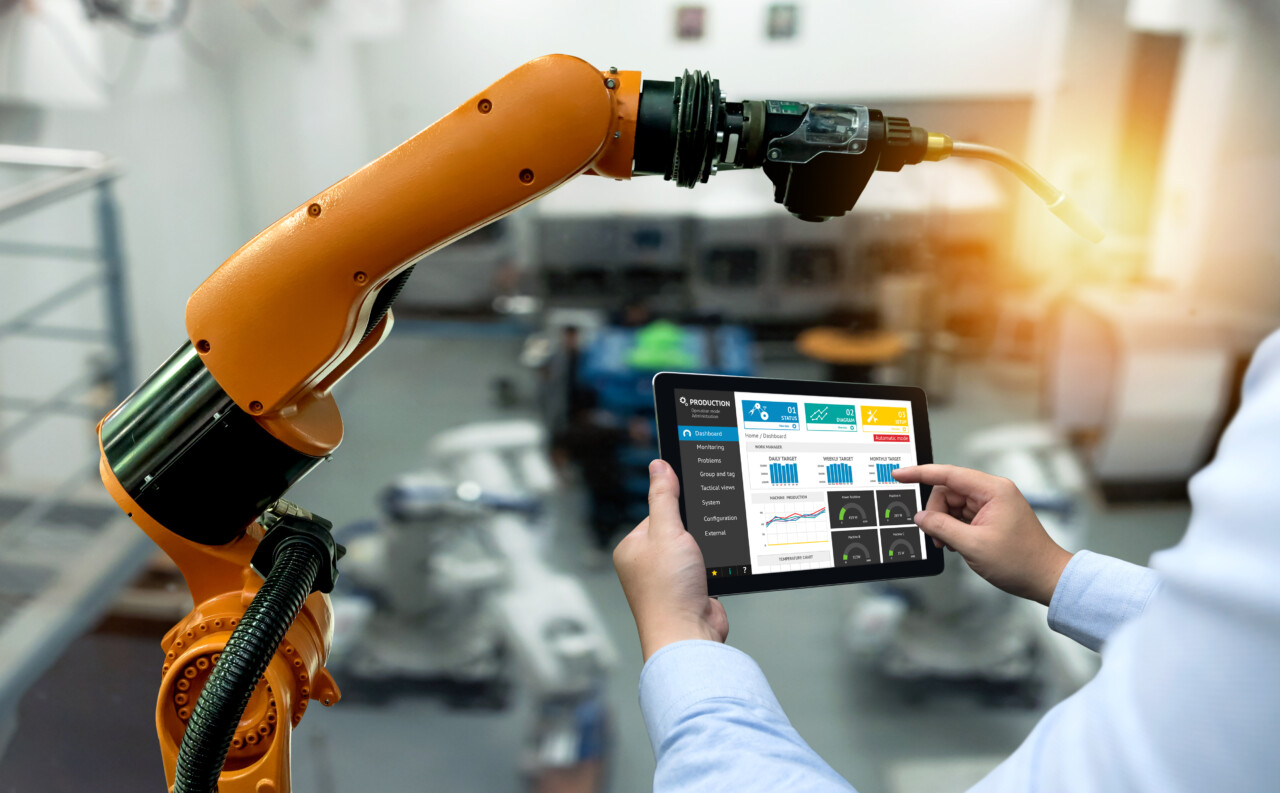Get ahead of the competition: How to win the industrial data game

Service
- Data and AI
- Strategy and Transformation
- Technology and Engineering
Industry
- Industry
- Manufacturing
White Paper October 10th, 2023
The most expensive resource in the world, data, can give any organization a significant competitive edge. However, just collecting data from different sources is not enough, and things can get even more complicated when you need to introduce a new piece of equipment to the shop floor. We know how to tackle these situations. Read the white paper and find out how your factory can be sure you’re taking advantage of the full potential of your data.
How to win the industrial data game
The journey to Industry 4.0 and smart manufacturing is not something that you immediately master; you need a foundation first. Having a holistic data strategy that interconnects data from different sources is the first step towards the world of predictive analytics. Data has been declared the most valuable resource in the world; data is the new oil. Don’t spill it on the floor, put it to good use. We help industries win at the industrial data game.
Harnessing the full potential of industrial data
An organization that has a full overview of their data can turn this information to their advantage. It gives them an opportunity to understand their business and manufacturing better. Comparable data from different stages of production can be used in predictive analytics that help factories stay two steps ahead of the game, and their competitors. Having top quality well-organized data allows an enterprise to understand how to improve production, decrease waste and even explore new business models. Industry 4.0 is a crucial part of our overall offering to help clients with their digital business strategy. With a data-driven approach, we help clients integrate and redesign their processes and operations from shop-floor to top-floor.

How to be smart about your data
Introducing new equipment to the factory floor is a happy event that can turn sour when people realize not enough effort has been exerted on the data strategy for the new equipment. Purchasing new machinery is an expensive and complex business that can result in a more transparent and efficient production process, but only if you are smart about your data. Here are a few things to consider on your journey to winning the industrial data game.
Here are a few things to consider on your journey to winning the industrial data game

Data quality
The amount of data a factory produces is vast. A production unit that doesn’t have a proper data collection system in place ends up being suffocated by data — you may be able to collect the data into relational databases and logfiles, but it’s impossible to extract the information or use it to improve your production process.
Data standardization
To maximize the benefits of data, a clear difference should be made between time-series process raw data and event based transaction data. A contextualized structure should be applied on top of the raw data. Implement a consistent way of augmenting data using a context related structure that will help organize the data for analysis in later phases. One standard way of applying such a structure is to follow international standard models, such as the models introduced as part of ISA-88 and ISA-95.
Data interconnection
All production plants have legacy systems that also collect data. However, machines from different vendors collect data differently. This leads to data silos — you’ll end up with a lot of data that is useless because it cannot be interconnected. To have a fully working well-oiled production line, data collecting has to be standardized. Data from different sources have to be consolidated and normalized to make them comparable.
Data ownership
Is the collected industrial data owned by production, quality, maintenance or IT? The owner of the data should be involved in investment planning from the beginning to make sure all the relevant parties are considered.
Digital twin
Digital twin is a digital representation of your physical assets, providing you a view of the past, present and future. Having the digital twin visualized on a dashboard gives you a significant competitive edge by taking your company to the next step — predictive analytics.
Data benefactors
An organization that has a full overview of their data can turn this information to their advantage — it gives them an opportunity to understand better their business and manufacturing. Comparable data from different parts of the production process can be used for predictive analytics that help factories stay two steps ahead of the game, and their competitors. Having quality, well organized data allows an enterprise to understand how to improve production, decrease waste and even find new business models.